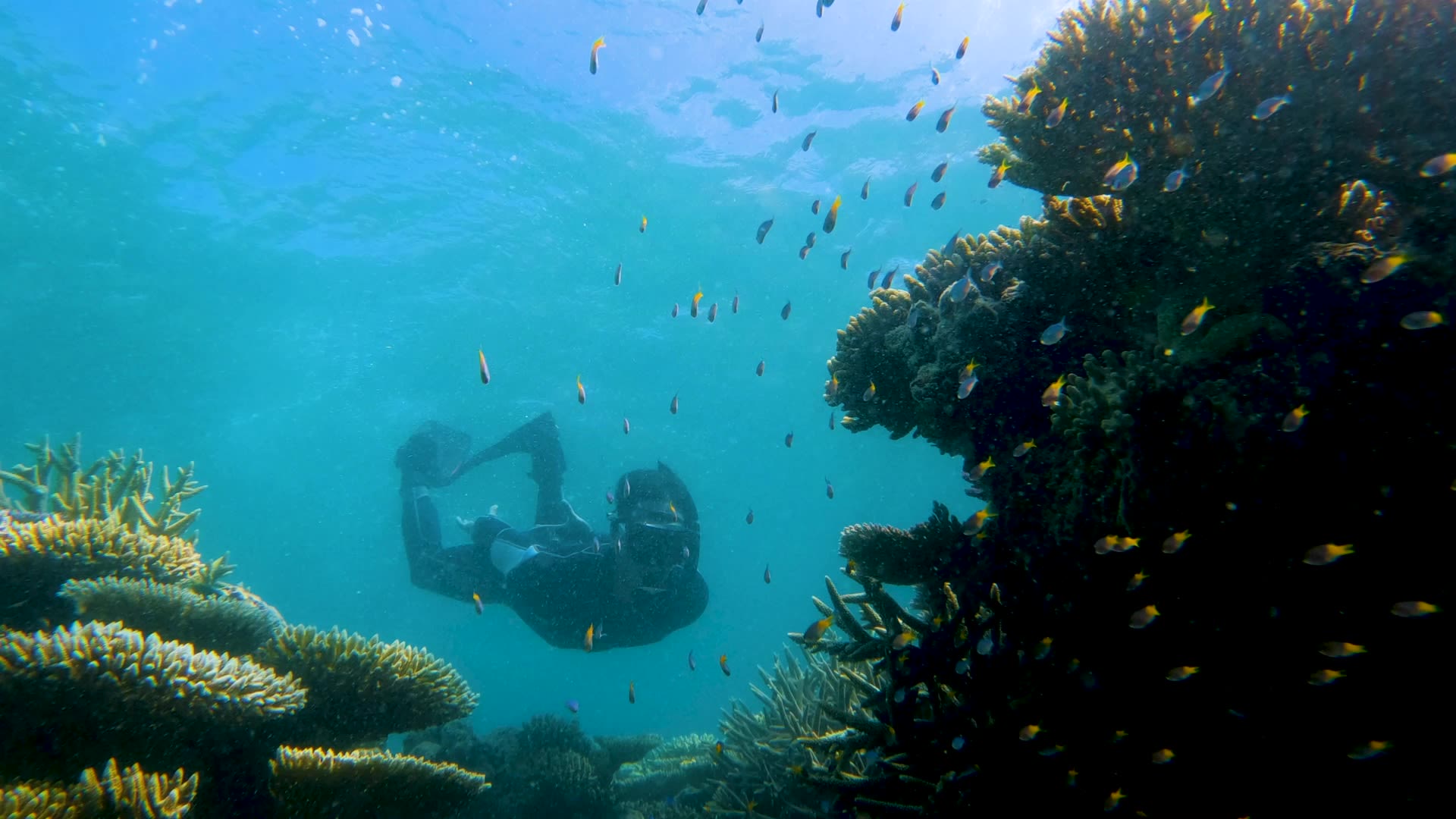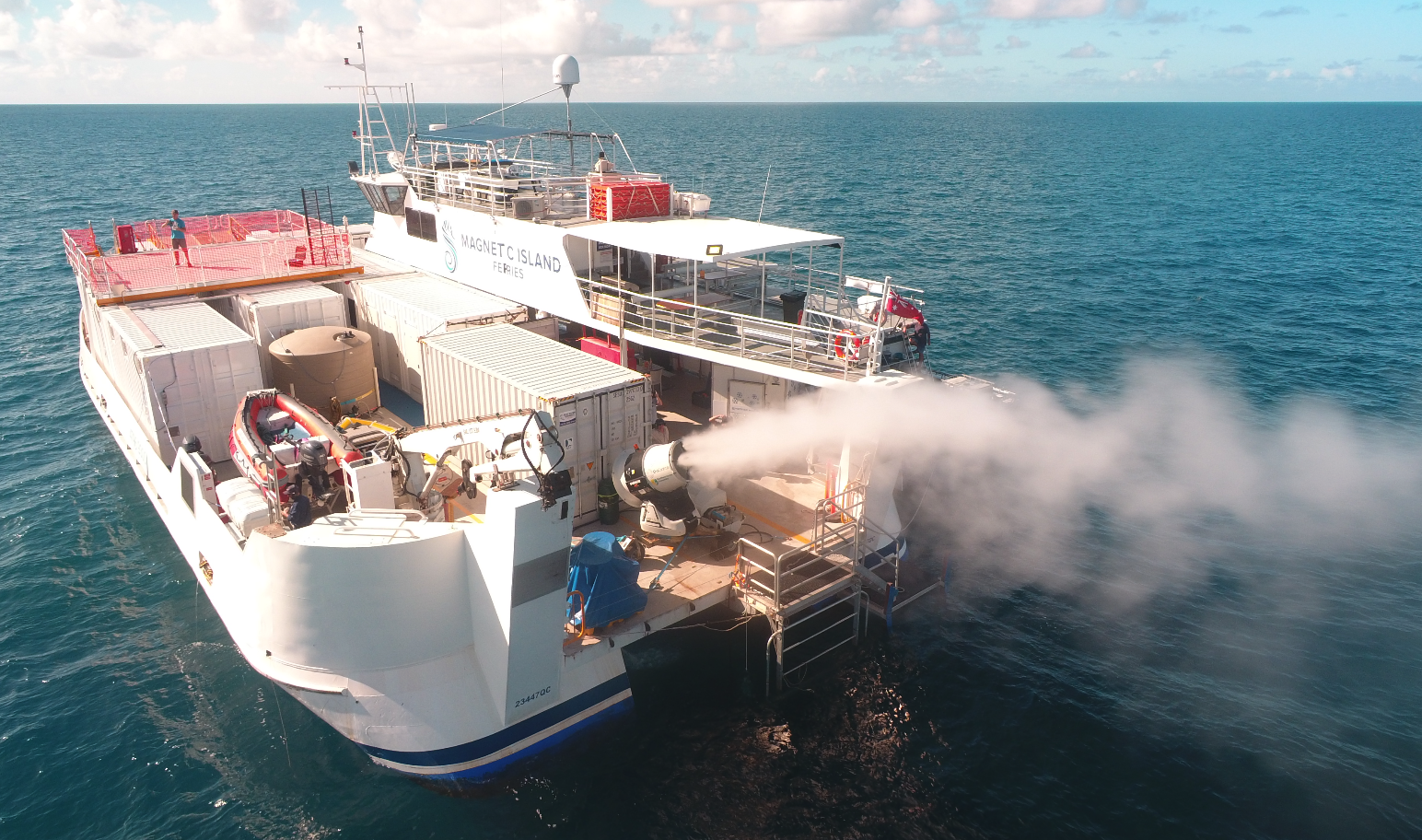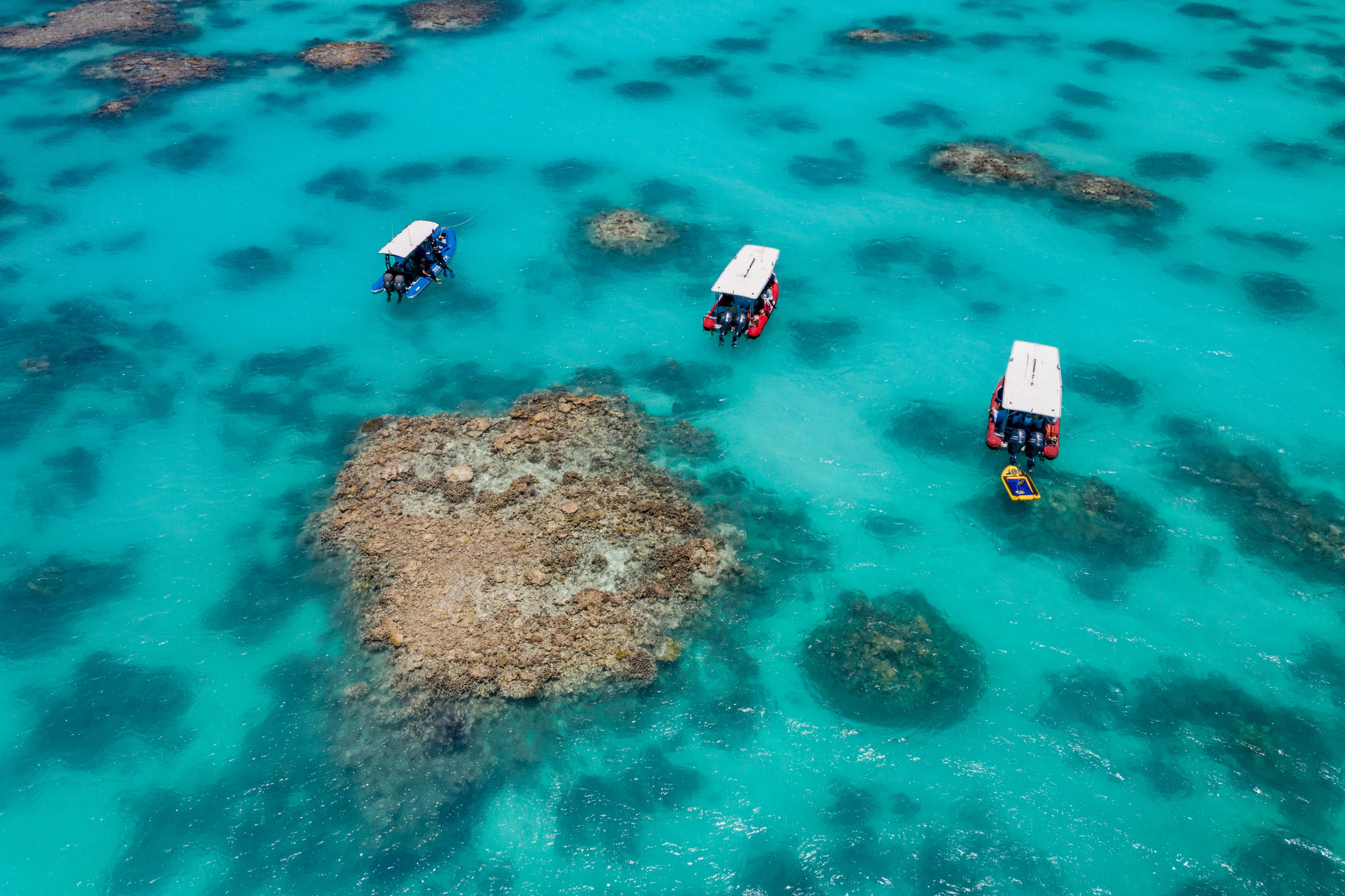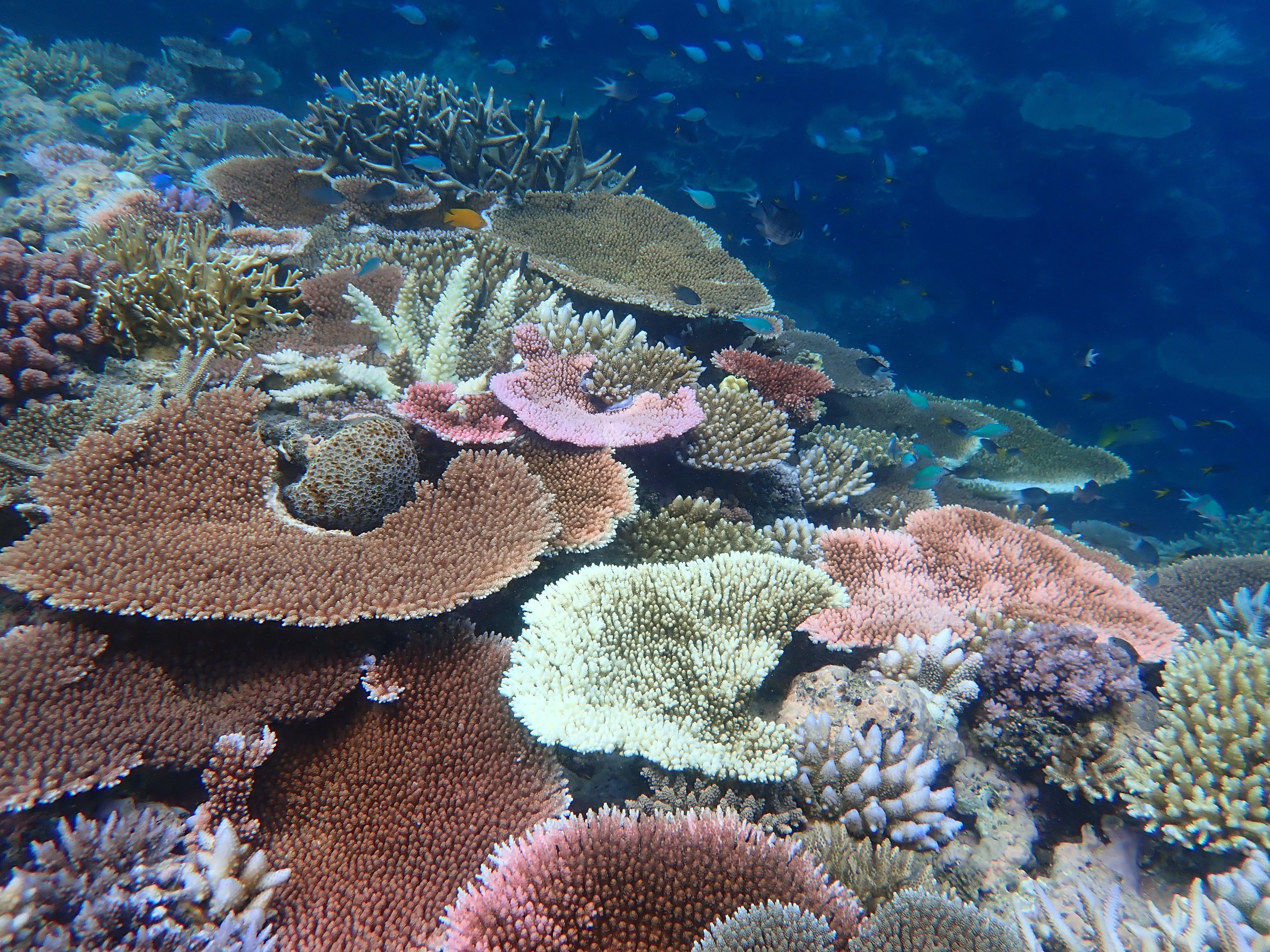Regional Australian University Diving Deep for Reefs and Oceans
Life below the water sustains life above the water. These Australian scientists are working to make sure it stays that way and that our reefs and oceans can adapt to a changing climate.

Southern Cross University is a regional university on Australia’s east coast that punches far above its weight in oceanography and marine science. Ecologists and oceanographers at the University have been working for decades to better understand and meet the challenges facing our reefs and oceans, and their work has never been more urgent.
Around the world, rising sea temperatures have turned once brilliant underwater coral gardens into barren wastelands. Marine ecosystems and species are increasingly vulnerable.
Nowhere is the need more pressing than on Australia’s Great Barrier Reef. One of the seven wonders of the world, it stretches thousands of kilometres down the nation’s east coast and comprises more than 3,000 individual reef systems and an incredible array of marine life. There have been four mass bleaching events on the Great Barrier Reef in the last seven years and there are grave concerns for the upcoming summer, following unprecedented ocean temperatures and extreme coral bleaching events in the northern hemisphere during 2023.
Last year Southern Cross University launched the Reefs and Oceans Research Impact Cluster to consolidate and accelerate solutions to the problems facing reefs and oceans worldwide.
The Cluster is experimenting with technology that might seem science fictional, were it not producing such impressive results. No idea is off the table in the race to save the world’s biggest underwater ecosystems.
Introducing the Reefs and Oceans Research Impact Cluster at Southern Cross University

Marine cloud brightening plume from sprayer jets (photo credit: Bendan Kelaher)
Marine cloud brightening plume from sprayer jets (photo credit: Bendan Kelaher)
Research in the clouds
The tools of this research are not only seaborne. The atmosphere above the reef is useful for airborne platforms to monitor and understand what is happening below, and why.
Based at the University's National Marine Science Centre (NMSC), Dr Daniel Harrison is experimenting with ‘cloud brightening’ technology to help clouds reflect solar energy away from the reef. When scaled up, this technique may be able to cool ocean temperatures and reduce bleaching.
“Marine cloud brightening sees microscopic sea water droplets sprayed into the air, creating a plume of salt crystals which interacts with clouds to reflect solar energy away from the reef when heat stress is at its maximum,” says Dr Harrison.
Following more than 30 years of theoretical work, Southern Cross University is the first in the world to take brightening technology outdoors.
‘Fogging’ is another technique under trial, which mimics the effects of fog by adding seawater to the air from a generator on moored platforms or vessels. It has the potential to protect reefs from solar radiation for short periods, potentially reducing coral bleaching in a relatively cost-effective way while buying precious time for longer-term climate change mitigation.
All in the Genes
Genetic research into corals is also playing an important part. Dr Emily Howells is investigating the capacity of reef-building corals to adapt to climate change. In focus are corals with a genetic predisposition for thermal tolerance and, by extension, how this innate adaptivity might be harnessed for conservation and restoration.
The research is in collaboration with the Australian Institute of Marine Science in Townsville (Queensland) and King Abdullah University of Science and Technology in Saudi Arabia.
It involves taking samples from thousands of corals across the Great Barrier Reef and Indo-Pacific and measuring their heat tolerance during bleaching events and controlled experiments. Whole-genome DNA sequencing is used to understand how much variation in heat tolerance is determined by genetics and to identify markers associated with heat tolerance traits. This information helps predict the potential of corals in different locations to adapt to climate change and identifies tolerant corals for selective breeding trials.

Coral IVF
Distinguished Professor Peter Harrison is a globally acknowledged leader in marine science and the pioneer of the extraordinary Coral IVF breeding process. This involves the collection of large quantities of coral spawn from heat-tolerant corals. Millions of baby corals are reared in specially designed nursery pools on the reef itself and when the time is right, they are delivered to target areas to restore and repopulate damaged reefs. They can even be distributed by underwater robots, thanks to the assistance of colleagues at the Queensland University of Technology.
Coral IVF has already produced extraordinary results and has the potential to make a difference to reef recovery on a vast scale.
The projects led by all three scientists are part of the Reef Restoration and Adaptation Program (RRAP), a partnership with the Australian Government’s Reef Trust and the Great Barrier Reef Foundation. They have been supported by local Indigenous communities, with permits granted by the Great Barrier Reef Marine Park Authority.

Coral IVF at Heron Island
Coral IVF at Heron Island
Pushing the boundaries of carbon storage
The science and knowledge generated by the Cluster’s work has ramifications for marine systems throughout the world’s oceans.
For example, Associate Professor Kai Schulz is advancing knowledge of Ocean Alkalinity Enhancement (OAE) for carbon dioxide removal and storage. OAE involves the controlled addition of crushed minerals or suitable alkaline agents from industrial processes into the ocean to mitigate climate change.
Adding industrial matter to the oceans? That sounds counter-intuitive, until Associate Professor Schulz explains: “Next to natural rock minerals, certain industrial inorganic by-products have the capacity to be an effective, ocean-based conduit for carbon capture and storage.
“The ocean already absorbs more atmospheric carbon dioxide than anything else and perhaps, through strategies like OAE, it might be helped to do even more, although we must not proceed without full knowledge of what it means for the oceans themselves and their delicate and complex ecosystems.”
Associate Professor Schulz’s research is part of a five-year, $11 million partnership between Southern Cross University, UTAS, University of Hamburg, the GEOMAR Helmholtz Centre for Ocean Research (Kiel), and Dalhousie University in Halifax, Nova Scotia. Funding has come from the Ocean Alkalinity Enhancement R&D Program, a multi-funder effort incubated by the Carbon to Sea Initiative.
At the base of his work and that of his Cluster colleagues is a profound understanding of the value of reefs and oceans to hundreds of millions of people worldwide whose lives are directly supported by these systems.
It is research of the deepest impact with the broadest application, to ensure the world’s oceans remain capable of sustaining life and that coral reefs remain precious assets, rather than precious memories.

About Southern Cross University
- 3 main campuses on Australia’s east coast / 7 branch campuses including main cities
- 20,000+ students
- Top 200 Young Universities (Times Higher Education World University Rankings) and Top 450 Environmental Sciences (QS Rankings 2023)
This content was paid for and created by Southern Cross University. The editorial staff at The Chronicle had no role in its preparation. Find out more about paid content.



